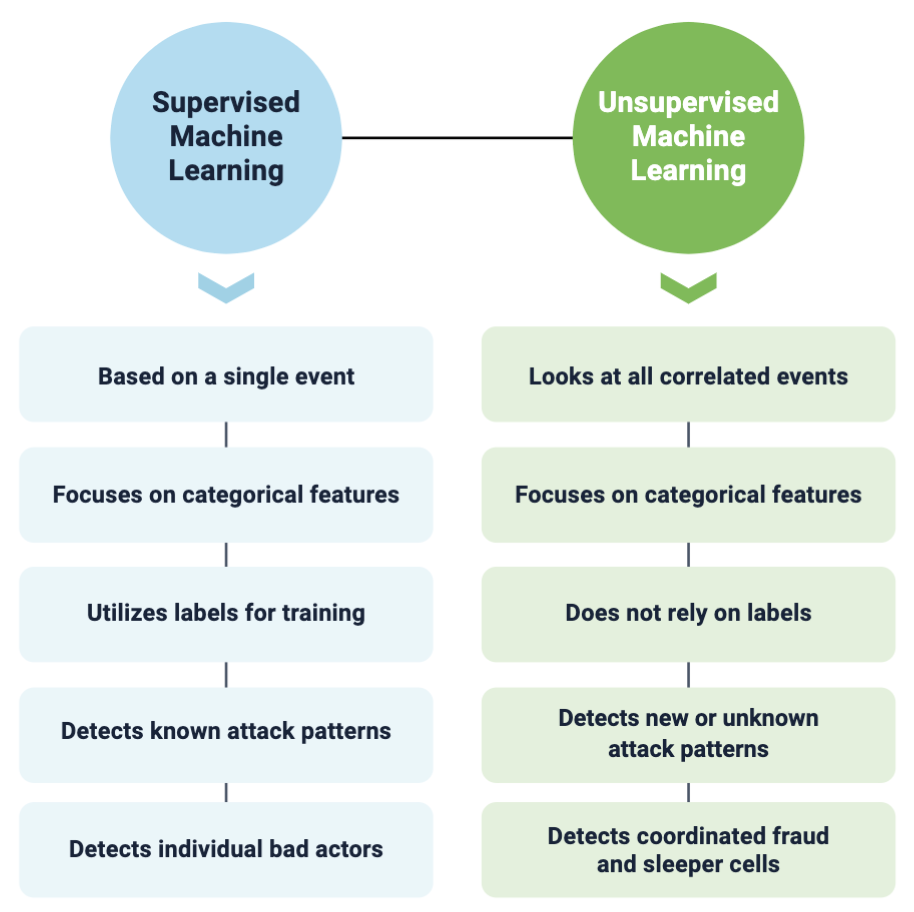
Banking: How Machine Learning Augments Rules to Boost Fraud Detection
The banking ecosystem isn’t what it used to be just 10 years ago, and this can be a good thing depending on how well your bank has adapted to improvements in fraud prevention technology.
As a whole, banks are usually not the first to jump on new technology as it evolves and instead wait to understand its role and inner workings prior to adjusting their legacy systems. This has certainly been the case when it comes to empowering fraud teams with machine learning and AI.
Things are changing, however. More is understood about how machine learning and rules-based systems are creating fairness, transparency, accountability, reliability, and safety within fraud detection departments. Now, new machine learning solutions are instilling more confidence in these technologies.
The Role of Rules and Machine Learning in Banking Fraud
Financial institutions are usually reluctant to make major upgrades to their core fraud detection systems due to the expense and complexity of such an undertaking. However, adding machine learning to existing rules-based solutions allow banks to take advantage of new technologies without reinventing the wheel.
Financial institutions often use fraud detection solutions that incorporate rules engines because rules-based solutions provide a number of advantages. Rules allow banks full control over their fraud system, and they are good at detecting known fraud methods. Further, rules-based solutions take out the guesswork by clearly indicating why a case is considered fraudulent.
However, these traditional rules-based solutions do come with certain drawbacks. For example, although they are great at detecting known fraud patterns, rules engines cannot detect unknown threats. That disadvantage places rules-based solutions firmly in the reactive category of fraud detection.
It can often take months to detect new patterns of fraud with a rules-based approach, and when those patterns are detected, new rules must be added to account for them. As time goes on and new rules continue to be added, this approach becomes more difficult to manage. For some financial institutions, there may be hundreds or thousands of rules in the system, adding to the complexity of fraud management.
Layering machine learning into the mix, on the other hand, simplifies fraud detection and changes it from reactive to proactive. Machine learning models do not require retraining over time; on the contrary, machine learning capabilities are continuously evolving as more data is ingested by the fraud system. By adding machine learning to existing rules-based processes, financial institutions can detect both known and unknown fraud patterns proactively.
Machine learning brings automation into legacy banking systems, allowing fraud teams to make better data-driven decisions at scale and eliminate much of the manual case review that comes with fraud detection. Machine learning finds hidden connections between activities that could indicate fraud. As new fraud patterns are revealed, models can be refined to further enhance their effectiveness.
Machine learning integrates with existing rules-based fraud systems and data, much like how you can add a security system to an existing home instead of building a new home to include that same security system. This upgrade allows you to maintain up-to-date security to combat today’s threats of fraud.

Achieve Higher Accuracy and Detect More Attacks with Machine Learning
Machine learning, both unsupervised and supervised, brings a higher level of accuracy to current fraud detection systems and detects both new and previously unseen attacks. Unlike supervised machine learning, unsupervised machine learning does not rely on rules to learn and process information. Rather, it reviews millions of data points in real time to uncover potential fraudulent activities.
This allows banks to stay one step ahead of the curve and combat fraud without having to constantly retune their models. It offers greater transparency into activities that may not look connected on the surface but could be part of a complex, organized crime ring. And because it isn’t hindered by rules, it increases the reliability, accountability, safety, and fairness of your entire fraud detection program.

And, like rules, machine learning can integrate with existing banking systems without reinventing the wheel.
Enhancing the Banking Fraud System with Machine Learning
Rules engines detect known types of fraud. But to truly become a leader in fraud prevention requires more than relying on only what’s previously been discovered. Machine learning further augments the power of rules to create a well-rounded fraud prevention program that can scale and grow as fraudsters’ attack techniques change.
Learn more about how machine learning and rules-based systems work together to create a powerful defense against fraud. Request a demo for your financial institution today!

Latest Articles







